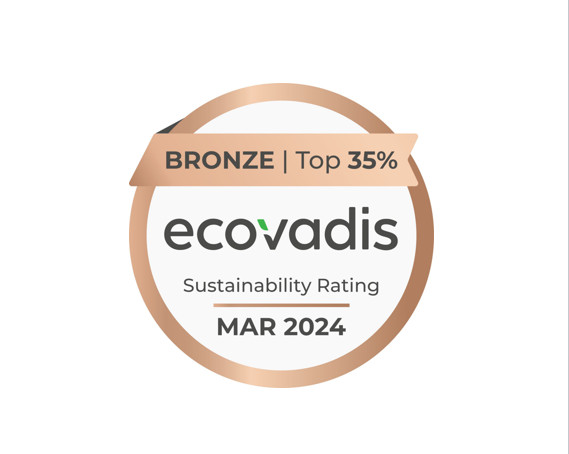The cosmetics industry is a dynamic and ever-changing landscape. Beyond the glitz and glam of the latest trends, a complex web of economic, political, social, and environmental factors affecting cosmetic industry and what consumers ultimately choose. Understanding these factors is crucial for brands to stay ahead of the curve.
Índice:
- Consumer Buying Power
- Currency Fluctuations
- Legal Compliance
- Taxation
- Political Stability
- Consumer Preferences
- Social Media Influence
- E-Commerce Growth
- New Market Entrants
- Product Safety Standards
- Sustainability Concerns
- Animal Cruelty
1.Economic Factors
a) Consumer Buying Power
Consumer purchasing power directly affects demand for beauty products. In robust economies, consumers may have more disposable income to spend on premium beauty brands. Conversely, Economic downturns can lead to a shift towards more affordable options or a decrease in overall spending. For instance, during the 2008 recession,L’Oreal successfully navigated the downturn by focusing on its affordable drugstore brands like Maybelline.
b) Currency Fluctuations
Exchange rates can affect the cosmetic industry in multiple ways. They influence the cost of importing raw materials and exporting finished products, impacting both production costs and overseas pricing strategies.Businesses that operate globally are especially vulnerable to these shifts.
2.Political Factors
a) Legal Compliance
Companies are required to ensure legal compliance in every aspect of their operation. This encompasses the integrity of marketing claims, the legality of business practices, and the observance of international trade laws. Government regulations on import/export, tariffs, and ingredient restrictions can affect the cost and availability of raw materials and finished products.Companies must also navigate changing global cosmetics regulations.
b) Taxation
Changes in tax policies can impact the price of cosmetic products and profitability of companies.
c) Political Stability
Political instability in certain regions can disrupt supply chains and create uncertainty for companies operating there.
3.Social Factors
a) Consumer Preferences
Social trends and changing beauty ideals significantly impact the cosmetics industry. The rise of clean beauty, inclusivity in makeup shades, and the growing men’s grooming market are all testaments to this. Fenty Beauty, founded by Rihanna, capitalized on this by offering a wide range of inclusive foundation shades specifically catering to diverse ethnicities, a major demographic in these markets.
b) Social Media Influence
Social media platforms have become pivotal in the marketing and branding of cosmetics. Brands are harnessing KOLs and social media algorithms to reach targeted demographics. They effectively utilize platforms like Instagram and TikTok for live product demonstrations and tutorials, engaging an audience that values authenticity and peer recommendations.
Celebrities have a considerable effect on the cosmetic industry’s trends. High-profile endorsements can elevate a brand’s presence and credibility. Consumers are often drawn to products that are associated with public figures they admire; thus, celebrity-backed products can have a significant impact on consumer purchase behaviors. Companies harness this power by collaborating with celebrities to attract a targeted audience.

c) E-Commerce Growth
The growth of online shopping has significantly impacted the industry. It allows for easier access to a wider variety of brands and products, but also increases competition and demands efficient online marketing strategies. Glossier, a digital-first makeup brand, built its success entirely through its strong online presence and social media marketing, bypassing traditional department store distribution channels.
E-commerce has revolutionized the way beauty products are sold. VR allows consumers to sample products online, fostering a more interactive shopping experience. Additionally, sophisticated data analytics enable companies to optimize their online presence, predict trends, and tailor their marketing strategies to consumer preferences.

d) New Market Entrants
New brands and products are frequently entering the cosmetic industry, intensifying competition. These entrants often innovate, offering unique ingredients or leveraging digital marketing strategies to capture consumer interest. Companies often acquire emerging competitors or merge to enhance their product portfolios, gain new technologies, and expand market reach. Brand loyalty is established when customers trust and favor a cosmetic brand over others.
4.Environmental Factors
a) Product Safety Standards
Manufacturers must adhere to stringent product safety standards to protect consumers. Ingredients and formulations undergo rigorous testing procedures to verify that they are non-toxic and suitable for use. For instance, the presence of allergens or irritants is closely monitored, and there is a mandatory requirement for clear labeling. According to RegASK, staying updated with such regulations is vital for the industry’s adherence to safety guidelines.
b) Sustainability Concerns
Consumers are more environmentally conscious and expect brands to adopt sustainable practices. This includes using eco-friendly packaging, sourcing ingredients ethically, and minimizing the industry’s environmental footprint. Shangyang,a leading manufacturer of makeup & makeup tools, insist on green manufacturing for the past 18 years. It has set carbon emission objectives and completed the CDP questionnaire for the ECO VADIS evaluation each year.

c) Animal Cruelty
The demand for cruelty-free cosmetics continues to rise. Consumers are actively seeking brands that do not test on animals, driving innovation in cruelty-free product development.
5.Conclusion
Economic factors also play a crucial role, especially for older generation. Consumers are more conscious of health and environmental impacts as well as innovation. The rise of social media and digital platforms has contributed to the growth not only in product diversity but also in how cosmetics are marketed and sold. These digital platforms have become vital for companies to engage with customers and build beauty communities that influence brand loyalty.
By understanding these interwoven factors, cosmetic companies can develop informed strategies to navigate the ever-changing industry landscape. Prioritizing economic efficiency, political awareness, social responsibility, and environmental sustainability will be key to success in the years to come.

Mais para ler:
- What makeup brushes are suitable for beginners?
- Types of foundation brush With Pictures
- The Evolving Landscape: How Economic, Political, Social, and Environmental Factors are Shaping the Cosmetics Industry (O cenário em evolução: como fatores econômicos, políticos, sociais e ambientais estão moldando o setor de cosméticos)
- Para que serve uma escova de polimento?
- Quando substituir os pincéis de maquiagem: Um guia abrangente





